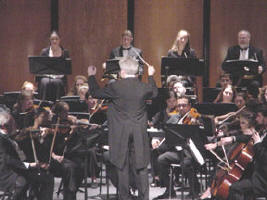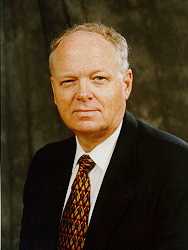|
Performance Practice For more information about Dr. Anderson, visit his faculty web site. Or you may contact him via email. |
Introduction Renaissance Baroque Classical Romantic
|
Performance Practice: a fairly recent area of musicological study |
Two Basic Approaches to Musical Performance:
-
Subjective (as I feel it); modernizing approach in use of voices and instruments; tends to be a one style approach; often leads to anachronistic performance practices.
-
Objective (as the composer intended during his life time); involves the search for information on how music was originally performed; concerned about authenticity; multi-style approach.
Basic Facts
-
Pitch
a. Tuning fork invented in 1711 by John Shore and improved by Rudolph Konig (c. 1850).
b. Pitch was not standardized until the 19th century (1859) by the Paris Academy and confirmed an international pitch at a conference in Vienna in 1885 ("A" = 435); "A" = 440 was adopted at a conference in London in 1938!
c. Bach's instrumental music as well as the symphonies of Haydn, Mozart, and Beethoven were performed at least a half step lower in their day than is the custom today. Bach's organ works and cantatas, however, were likely performed a semitone or whole tone higher than today!
d. Pitch was often determined by the particular pitch of organs which could vary greatly from church to church. -
Expression Marks
a. None found before 1500, rare before 1650.
b. Crescendi and decrescendi before 1750 limited chiefly to a single ornamented tone called the "Messa di voce."
c. Mannheim school was the first to use dynamic effects in the modern way (mid 18th century).
d. Dynamic markings in Bach are few and limited to f, p, and pp.
e. Conductors must beware of works and editions that are heavily over edited! [See Choosing a Good Edition] -
Tempo
a. Before 1600, tempo markings are practically unknown; tempo is implied in the notational signs.
b. Tempo terms in Bach's day indicate mood more often than a set pace; presto, for example, meant fast but not extremely fast as in Mozart's time.
c. Metronome was invented c. 1812 by Dietrich Nikolaus Winkel of Amsterdam, but was named after Johannes N. Maelzel who used and exploited Winkel's invention; i.e., metronome markings before 1830 are likely those of the editor and not the composer!
The need for study and understanding of musical styles and performance practices is more pronounced as one moves backward through musical history; i.e., the older the music, the more likely one will approach it through practices of later styles and periods, thus becoming anachronistic.

| If you would like to be added to the TSMP Email Mailing List and receive periodic notifications of new articles and updates to this website, then please email TSMP.
The Texas School Music
Project is a source for ideas and information
concerning pedagogical
practices in the music classroom or rehearsal hall. The TSMP is a service provided to
all music specialists by the faculty
of
the Department of Music
at Stephen F. Austin State University. Copyright © 2002, Department of Music at Stephen F. Austin State University |
